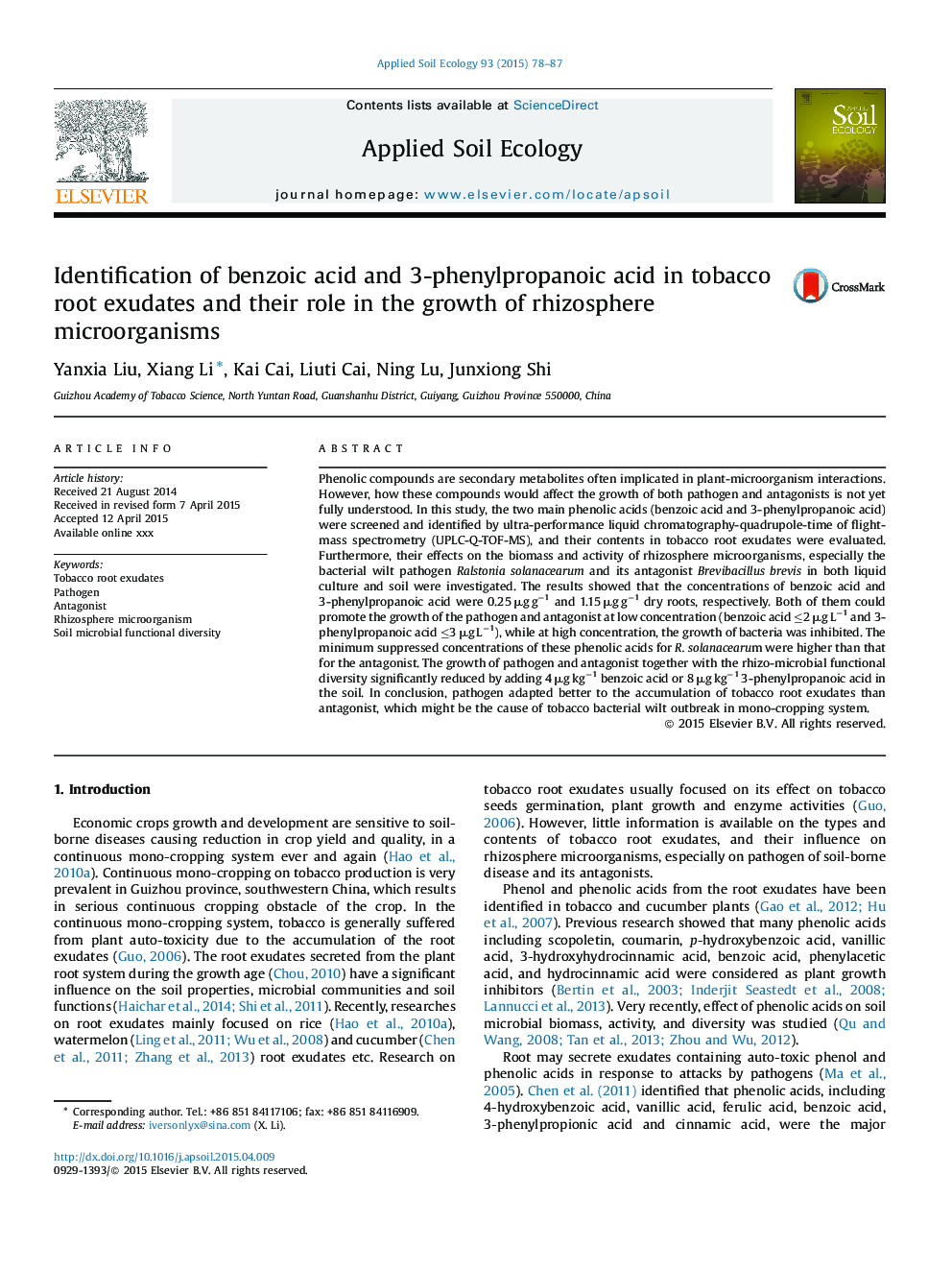| Article ID | Journal | Published Year | Pages | File Type |
|---|---|---|---|---|
| 6297791 | Applied Soil Ecology | 2015 | 10 Pages |
Abstract
Phenolic compounds are secondary metabolites often implicated in plant-microorganism interactions. However, how these compounds would affect the growth of both pathogen and antagonists is not yet fully understood. In this study, the two main phenolic acids (benzoic acid and 3-phenylpropanoic acid) were screened and identified by ultra-performance liquid chromatography-quadrupole-time of flight-mass spectrometry (UPLC-Q-TOF-MS), and their contents in tobacco root exudates were evaluated. Furthermore, their effects on the biomass and activity of rhizosphere microorganisms, especially the bacterial wilt pathogen Ralstonia solanacearum and its antagonist Brevibacillus brevis in both liquid culture and soil were investigated. The results showed that the concentrations of benzoic acid and 3-phenylpropanoic acid were 0.25 μg gâ1 and 1.15 μg gâ1 dry roots, respectively. Both of them could promote the growth of the pathogen and antagonist at low concentration (benzoic acid â¤2 μg Lâ1 and 3-phenylpropanoic acid â¤3 μg Lâ1), while at high concentration, the growth of bacteria was inhibited. The minimum suppressed concentrations of these phenolic acids for R. solanacearum were higher than that for the antagonist. The growth of pathogen and antagonist together with the rhizo-microbial functional diversity significantly reduced by adding 4 μg kgâ1 benzoic acid or 8 μg kgâ1 3-phenylpropanoic acid in the soil. In conclusion, pathogen adapted better to the accumulation of tobacco root exudates than antagonist, which might be the cause of tobacco bacterial wilt outbreak in mono-cropping system.
Related Topics
Life Sciences
Agricultural and Biological Sciences
Ecology, Evolution, Behavior and Systematics
Authors
Yanxia Liu, Xiang Li, Kai Cai, Liuti Cai, Ning Lu, Junxiong Shi,
